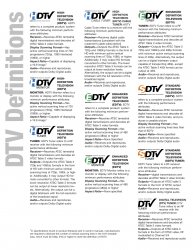I just downloaded the newly released "HD" version of "Top Gear, Season 14" and although the video quality is quite good I noticed that the encoding size on the first episode is 960x720 (playback is stretched to 1280x720 to maintain the correct 16:9 aspect ratio). I suspect that Apple did this because the series is recorded in PAL at 25fps (BBC in the U.K.) and the Apple TV can only handle full-resolution 720p at 24fps. Note that 960x720 isn't even XGA which is 1024×768 (the latter is the LCD resolution on the iPad).
This seems like a case of false advertising since I'm pretty certain that 960x720 does not fall within the technical specification of 16:9 HDTV. It's clearly better than the standard definition version but this is a case where the decoding limits on the Apple TV are really starting to show.
It's also apparent that some of the location shooting in "Top Gear" is still being done in SD. You can definitely see when they switch to SD during some of the car interior shots while on the road. Of course, this latter is not Apple's fault and all of the exterior shots, roadside scenery, and in-studio portions are recorded in HD.
In any case, I really don't think Apple should be selling 960x720 as "HD." By the way, the SD version is encoded at 640x480 and then stretched to 853x480 (anamorphic or enhanced for widescreen TVs).
This seems like a case of false advertising since I'm pretty certain that 960x720 does not fall within the technical specification of 16:9 HDTV. It's clearly better than the standard definition version but this is a case where the decoding limits on the Apple TV are really starting to show.
It's also apparent that some of the location shooting in "Top Gear" is still being done in SD. You can definitely see when they switch to SD during some of the car interior shots while on the road. Of course, this latter is not Apple's fault and all of the exterior shots, roadside scenery, and in-studio portions are recorded in HD.
In any case, I really don't think Apple should be selling 960x720 as "HD." By the way, the SD version is encoded at 640x480 and then stretched to 853x480 (anamorphic or enhanced for widescreen TVs).


